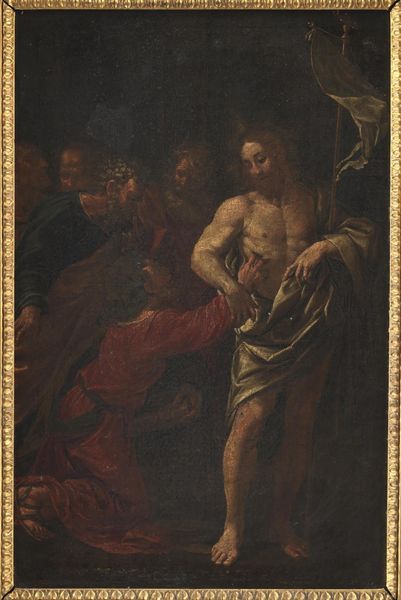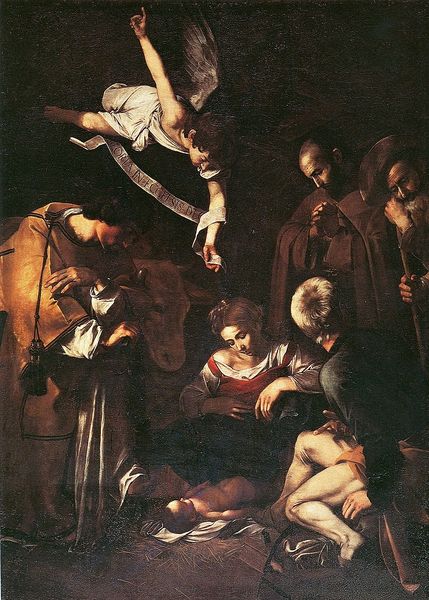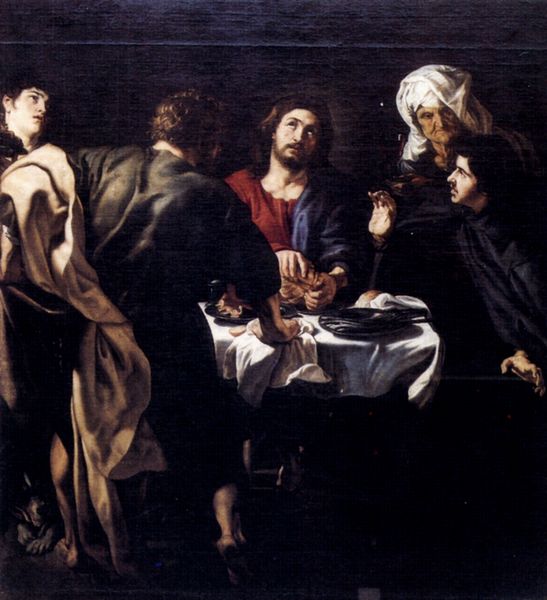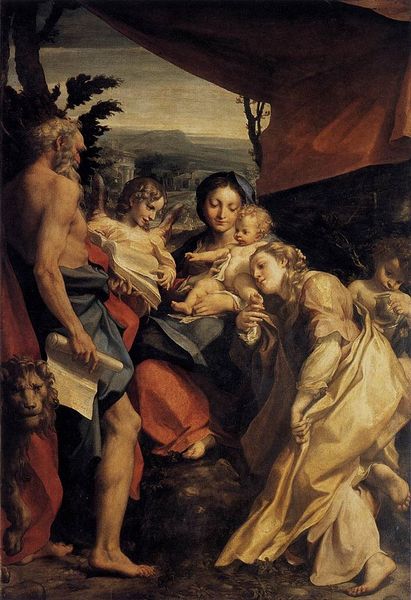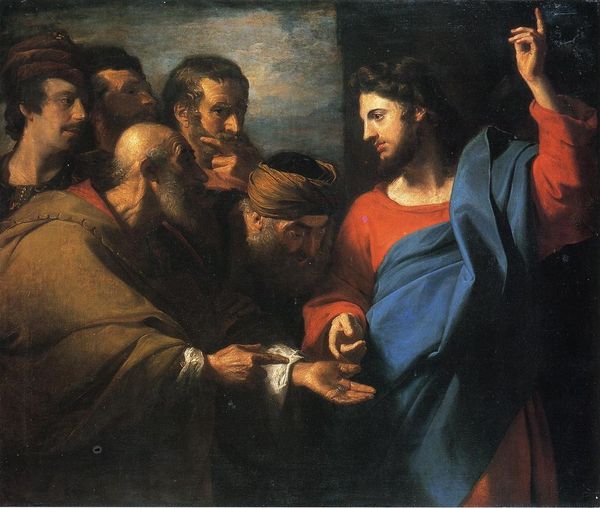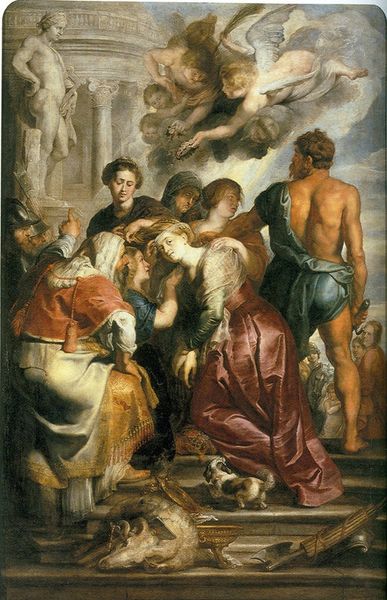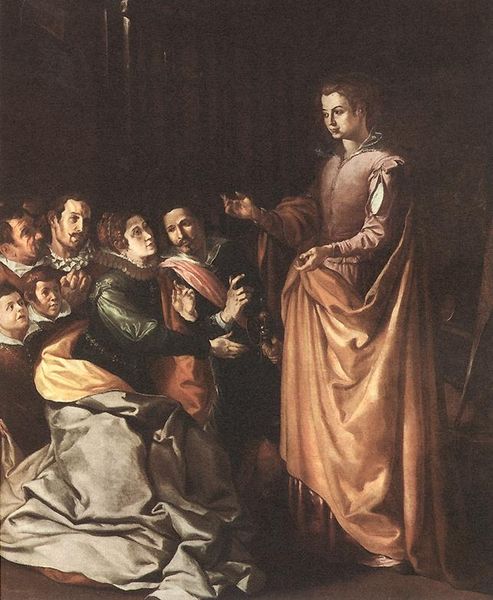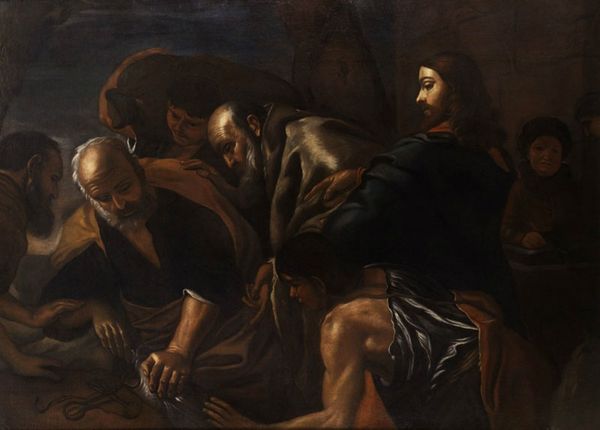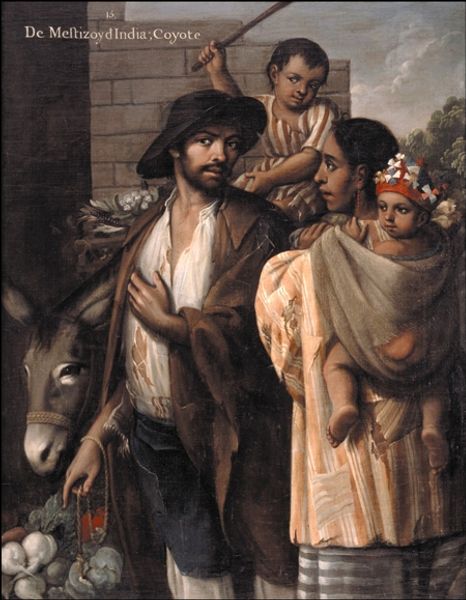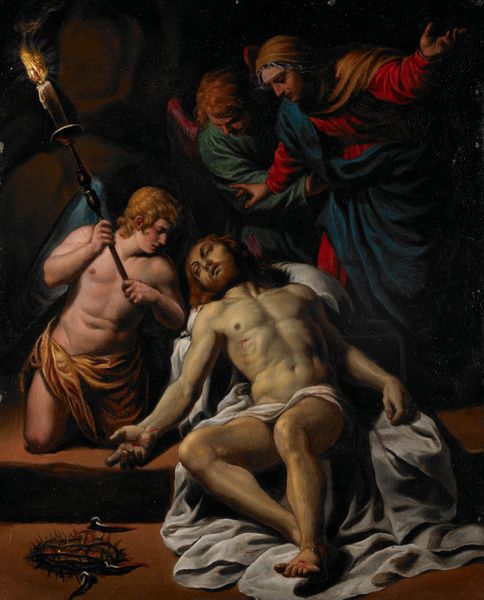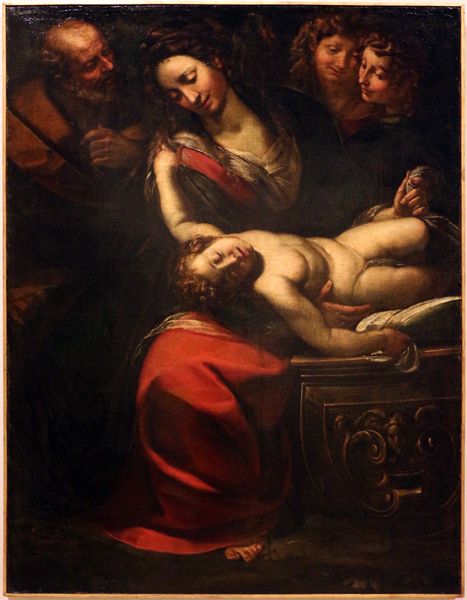
painting, oil-paint
#
portrait
#
venetian-painting
#
self-portrait
#
baroque
#
painting
#
oil-paint
#
charcoal drawing
#
mannerism
#
oil painting
Copyright: Public domain
Editor: This is Palma il Giovane's Self-portrait, an oil painting. The backdrop has a lot of energy. It feels almost…theatrical, like he’s placing himself within a grand narrative. How do we unpack the layers here? Curator: It’s important to understand Palma’s social position. Venetian artists during his time, especially those with established family names like Palma, navigated a complex web of patronage. These self-portraits weren’t merely personal reflections. They functioned as advertisements, projecting the artist’s skill and associating him with esteemed historical narratives. What strikes you about how he's presenting himself? Editor: I notice his confident gaze, his clothing that hints at wealth and status. And, of course, he's in the act of painting. But what about the scene in the background? It's clearly religious. Curator: Exactly. Notice the subjects' expressions and body language; their grief makes reference to the Crucifixion. This highlights his skill in history painting. By including that backdrop, Palma isn’t just showcasing his face; he's asserting his place within a tradition, a visual lineage connecting him to earlier Venetian masters like Titian, from whom he borrows compositional ideas, thus elevating his own status. Think of this as visual marketing within the established structures of the art world at the time. Editor: So, the politics of imagery are in play even in something as seemingly personal as a self-portrait? I thought it would be less formal somehow. Curator: Precisely! That seemingly candid glimpse into the artist’s world is, in fact, a carefully constructed performance designed to appeal to patrons, critics, and the art market in general. His skill, class status and family history grant a privileged status among contemporaries in Venice, so portraying those markers in visual terms through the use of classical and biblical subjects makes a profound and impactful statement to prospective audiences of this work. Editor: This makes me see the painting completely differently now. Thank you for shedding some light on how artists managed their own reputation and what art meant in that period. Curator: The intersection of art and society is complex, and I'm delighted to offer this new point of consideration to understand this striking and insightful painting.
Comments
No comments
Be the first to comment and join the conversation on the ultimate creative platform.
